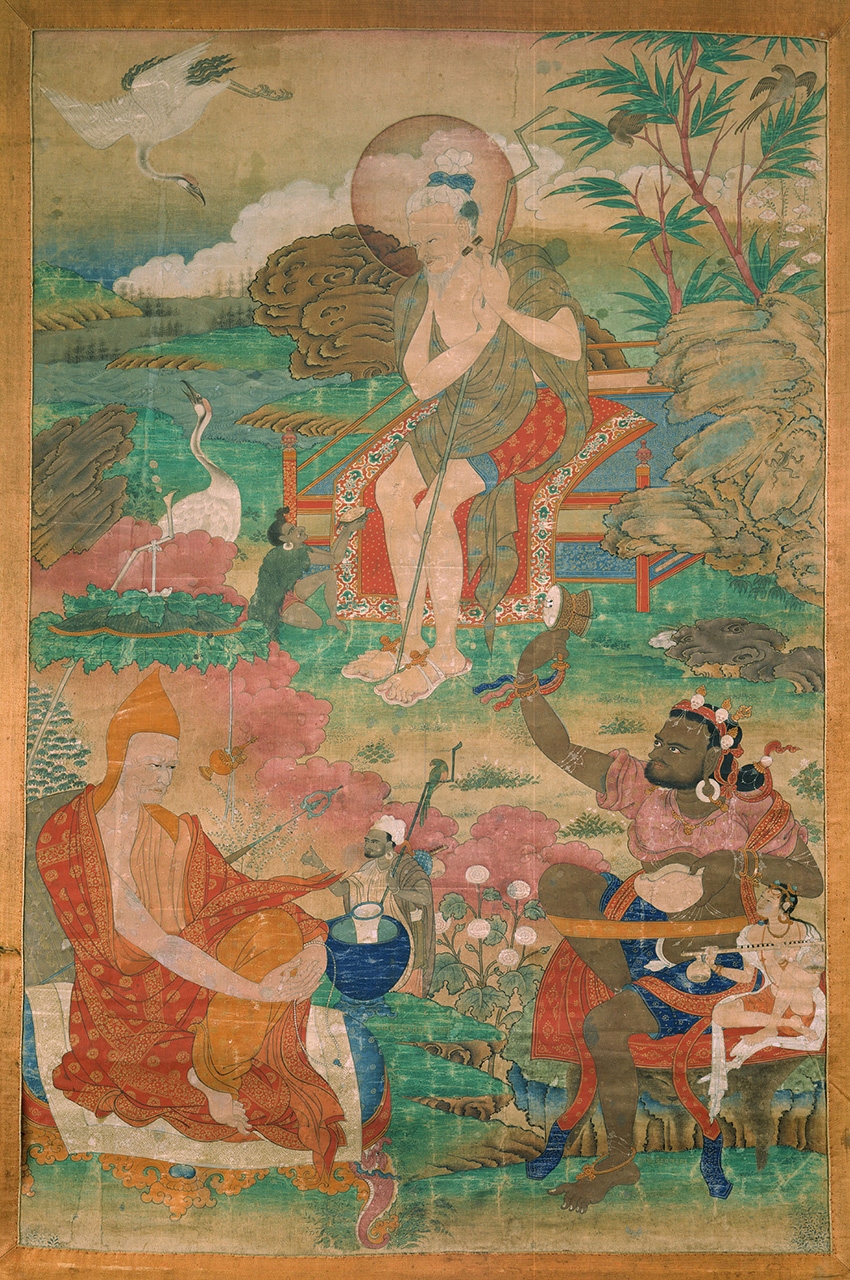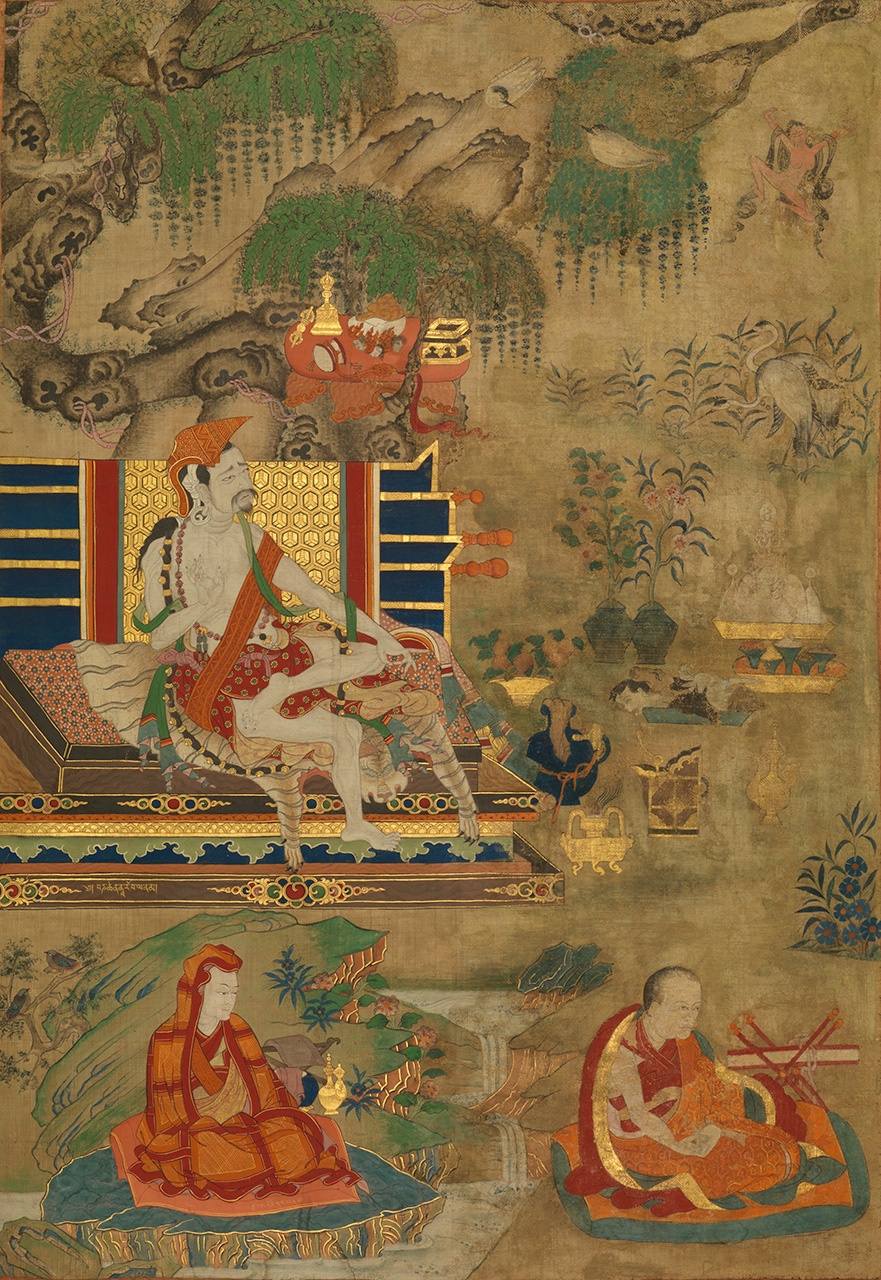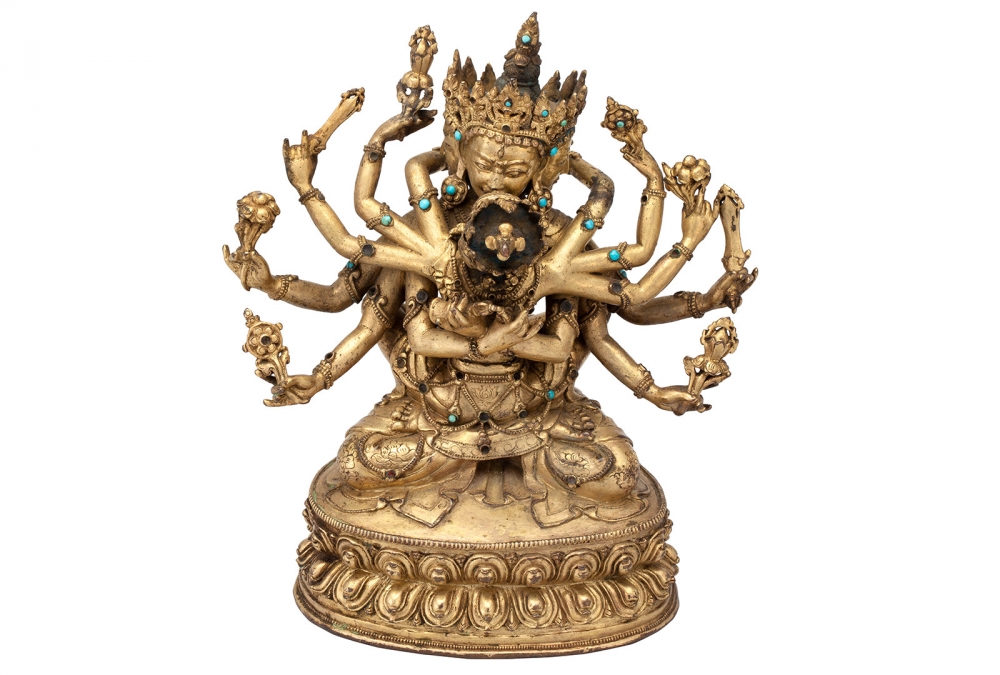

Mahasiddhas or the great tantric masters were true non-conformists of the Tantric Buddhist tradition. They resisted the comforts and strict supervision of Indian monastic living and instead practiced in impure, terrifying locations like cemeteries and cremation grounds [...]

This painting is from a large set depicting the eighty-four great Tantric adepts (mahasiddha) and portrays three of them, including both monastic and lay yogis [...]

In this painting the great Tantric adept (mahasiddha) Naropa sits gazing up at a red dakini flying in a dynamic pose in the upper-right corner [...]
__large-original-ratio.jpg)
This 16th century Tibetan sculpture represents Kanha “the dark-skinned one” who was one of the semi-mythical Indian tantric masters known as the Mahasiddhas (Maha means “great” and siddha means “adept”). Kanha is remembered as a great poet and singer and his life story exemplifies the highs and lows of the Mahsiddhas’ tantric path, an often shocking alternative to the paths of Buddhist monasticism and standard lay practice. Although Kanha was a very successful meditator who experiences numerous mystic visions, he struggled with pride in his tantric achievements and became overwhelmed by anger when he was challenged. Despite ultimately being associated with the failure to bring what he learned through meditation into his daily life, Kanha’s story is widely known and enjoyed in tantric cultures such as Tibet. He is an important link in the Lamdre lineage of the Tibetan Buddhist Sakya tradition.
— Dominique Townsend, Head of Interpretation and Innovation

